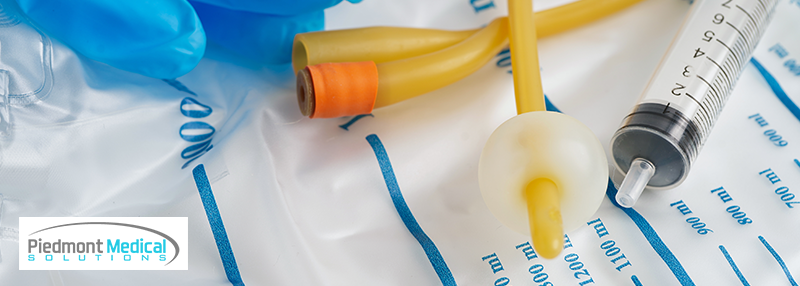Piedmont Medical Solutions
Updated Mon August 12, 2024
Published Under: Catheter Care

When it comes to medical care, there are many tools and devices that play a crucial role in helping patients recover from illness or injury. One such device that's often used in healthcare settings is the indwelling catheter. While it may not be a familiar term to everyone, indwelling catheters are an essential part of many medical treatments. Let's take a closer look at what indwelling catheters are, how they work, and why they're used in various medical situations.
What Is an Indwelling Catheter?
An indwelling catheter is a thin, flexible tube inserted into the body to drain fluids or introduce medications. It's called "indwelling" because it remains inside the body for an extended period, usually several days or weeks. Indwelling catheters are made of silicone, latex, or other materials and come in various sizes and types to suit different medical needs.
How Do Indwelling Catheters Work?
Indwelling catheters work by creating a pathway for fluids to flow out of the body or for medications to be delivered directly to the affected area. The catheter is inserted through a small incision or opening in the skin, and the tip is guided to the desired location using imaging techniques like X-ray or ultrasound.
Once in place, the catheter allows for:
- Drainage: Excess fluids, such as urine or pus, can be drained from the body, reducing the risk of infection and promoting healing.
- Medication delivery: Medications can be administered directly to the affected area, reducing systemic side effects and improving treatment outcomes.
Why Are Indwelling Catheters Used?
Indwelling catheters are used in a variety of medical situations, including:
- Urinary retention: To drain urine from the bladder when the patient is unable to urinate naturally.
- Wound care: To drain abscesses, hematomas, or other fluid-filled pockets that may develop after surgery or injury.
- Infection management: To deliver antibiotics directly to the site of infection, reducing the risk of systemic infection and promoting healing.
- Pain management: To deliver pain medication directly to the affected area, reducing the need for systemic analgesics.
Benefits of Indwelling Catheters
Indwelling catheters offer several benefits, including:
- Improved patient comfort: By reducing the need for frequent needle sticks and improving drainage, indwelling catheters can enhance patient comfort and reduce anxiety.
- Enhanced treatment outcomes: By delivering medications directly to the affected area, indwelling catheters can improve treatment outcomes and reduce the risk of complications.
- Increased efficiency: Indwelling catheters can simplify care by reducing the need for frequent monitoring and intervention.
Indwelling catheters are a vital medical device used in a variety of healthcare settings. By understanding how they work and why they're used, healthcare professionals can provide better care for their patients. At Piedmont Medical Solutions, we're committed to providing high-quality medical solutions that improve patient outcomes and enhance the overall quality of care.
Learn More
To learn more about indwelling catheters and other medical solutions, visit our website at https://www.piedmontmedicalsolutions.com/. Our team is dedicated to providing exceptional customer service and supporting healthcare professionals in their mission to deliver exceptional patient care.

Comments